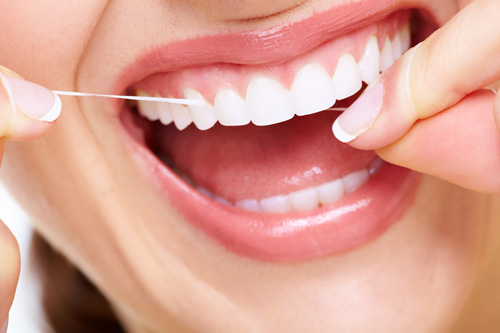<p>As periodontitis advances, nonsurgical procedures and improved oral hygiene become less effective methods of treatment. Instead, advanced stage periodontal disease often requires dental surgery to repair damaged tissue surrounding the teeth. Gingivitis in one type of peridontal disease that can be reversed with proper care. Triggers for gingivitis include stress, poor diet, hormonal changes like puberty or pregnancy, HIV, and drug use.</p>
<h3>Surgical Treatment of Advanced Stage Periodontal Disease</h3>
<p>Oral surgeons can use one or more of six surgical techniques to treat advanced periodontitis.</p>
<h4>Flap Surgery</h4>
<p>Also called pocket reduction surgery, flap surgery involves making tiny incisions that allow the surgeon to pull back the gums for the removal of otherwise inaccessible tartar. Afterward, the gums are replaced closely against the tooth, which decreases the pockets caused by periodontitis that bacteria finds hospitable.</p>
<h4>Bone Grafts</h4>
<p>Bones surround the roots of teeth. If periodontal disease has destroyed the bone, an oral surgeon grafts a tiny piece of real or synthetic bone to the damaged site. Bone grafts perform to hold teeth in place and promote bone growth.</p>
<h4>Soft Tissue Grafts</h4>
<p>Advanced periodontal disease attacks gums, and damaged gums react by receding. To repair damaged gums, oral surgeons graft bits of skin from a donor site, usually the roof of the mouth, onto the injured site. While this type of graft improves a mouth’s appearance, it also covers roots exposed by receding gums and prevents further recession.</p>
<h4>Guided Tissue Regeneration</h4>
<p>If advanced periodontitis destroys the bone surrounding teeth, the oral surgeon places a special, compatible mesh fabric between the damaged bone and the gum. Without the biocompatible fabric, gum tissue would grow where there should instead be bone growth. By preventing the gum from moving into the bone’s turf, bone and connective tissue can grow, as they should.</p>
<h4>Bone Surgery</h4>
<p>Bones destroyed by bacteria sometimes abound with tiny craters, which bacteria find just as hospitable as they find pockets. By reshaping and smoothing the bone, oral surgeons make it difficult for bacteria to congregate and expand.</p>
<h4>Enamel Matrix Derivative Application</h4>
<p>To treat receding gums, damaged bones or both, a special gel that contains the same proteins found in tooth enamel is injected onto the damaged roots of teeth. The proteins then encourage healthy new growth of bone and tissue. Find more information on choosing the correct toothbrush. </p>
<p>Surgical treatment results vary according to how far periodontal disease has progressed, how faithfully proper oral care is practiced after surgery and outside factors such as smoking and diet. To obtain the best results and prevent the need for further surgical treatment, follow carefully the post-surgical instructions of the oral surgeon and practice great oral hygiene.</p>
<p>The primary goal of orthognathic jaw surgery is to improve a variety of problems with a single surgical procedure. Following surgery, patients frequently find that speech is drastically improved, chewing and swallowing is noticeably easier and that they experience fewer instances of difficulty in breathing while asleep. Patients who have endured unequal jaw development for an extended period of time may find it helpful to consult a speech therapist after surgery in order to deal with learned speech mistakes influenced by the condition.</p>
<h5>Featured images:</h5>
<p><span class="license">License: Royalty Free or iStock</span></p>
<p><span class="source">source: http://www.bigstockphoto.com/image-43287994/stock-photo-beautiful-woman-smile-dental-health-care-clinic</span></p>
<p>Author Bio: Elizabeth Barnes writes about all things health and fitness. She is a gym rat and regular contributor to http://fitnuthealth.com.</p>

Treating Advanced Stage Periodontal Disease
